Backcountry Discovery Routes (BDR) are one of the best ways to adventure-road trip around the U.S. And what better way to celebrate Motorcycle Awareness month and National Road Trip day (May 28) than with the 10-year anniversary of BDR—an organization that literally defined the phrase “adventure riding.”
What is BDR?
Using double-track, forest service, and fire roads, the BDRs travel south to north through 10 states (and counting). The routes were designed mostly for dual-sport motorcycles. However, ATVs, 4WD, and dirt bikes use them as well. Where the trails are too difficult or narrow for less confident riders or drivers, chicken routes are provided in most cases.
As for the BDR entity itself, the website states: “Backcountry Discovery Routes is a non-profit organization that creates off-highway routes for dual-sport and adventure motorcycle travel. We have introduced a new route with free GPS tracks for the community every year since 2010.”
When I think about adventure riding, BDRs are the epitome. These incredible roads through some of America’s obscure rural towns and rarely seen scenery give a truer sense of the country over any U.S. interstate or highway. BDRs are the reason I ride an F 800 GS; there’s nothing better than throwing everything I need for 5-10 days onto the back of my bike and riding high into the mountains or scouting for that ideal lakeside camp.
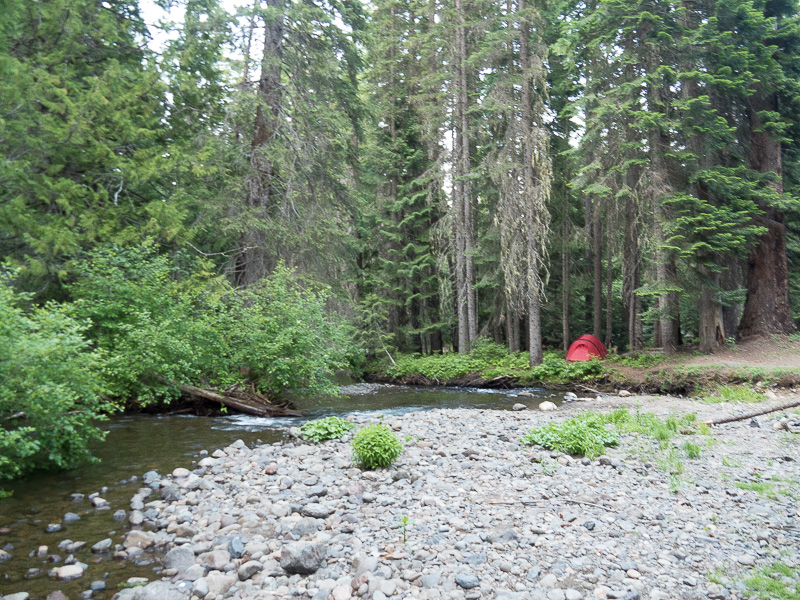
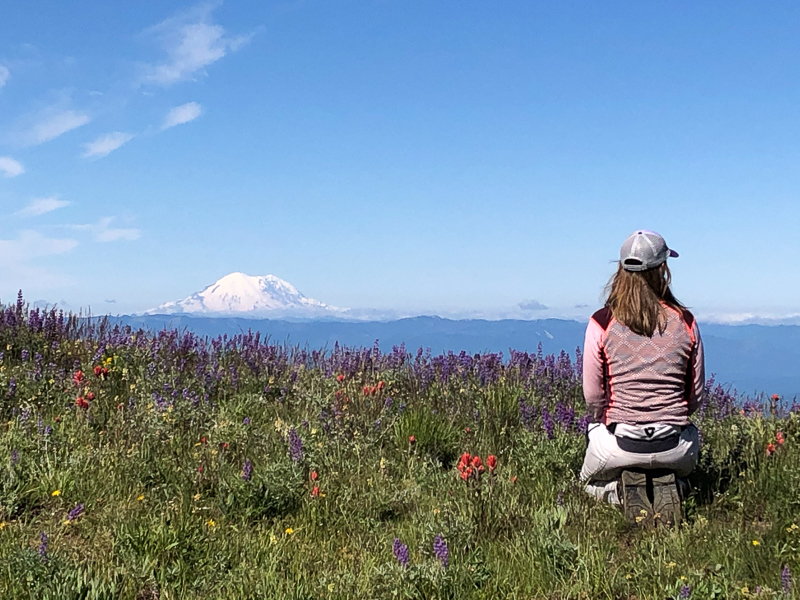
Admiring Mt. Rainier from the WABDR.
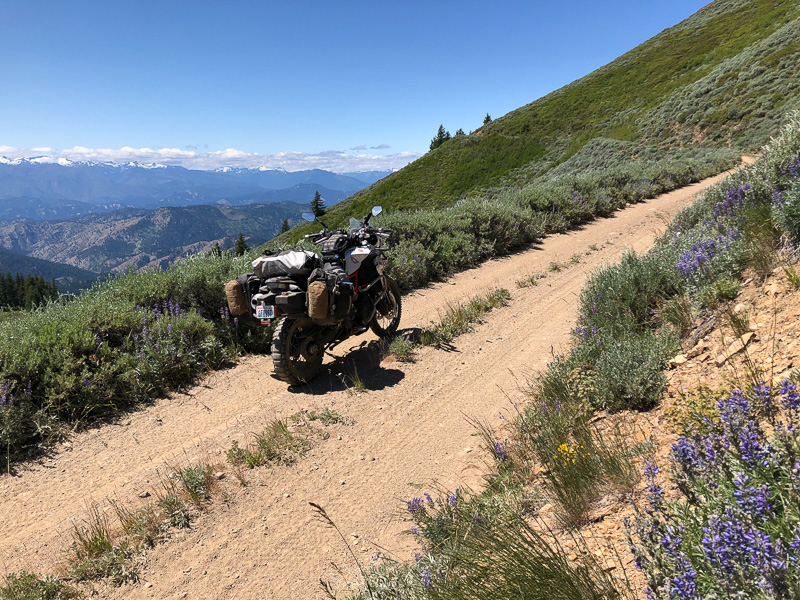
Along the WABDR.
The first off-highway motorcycle trip I took after getting my license in 2014 was to the Washington Backcountry Discovery Route (WABDR). I’d never ridden gravel before, and my 250cc Kawasaki Super Sherpa and I had a few wipeouts together, but I fell in love with the smell of the pine forests and the concept of “backpacking” on two wheels.
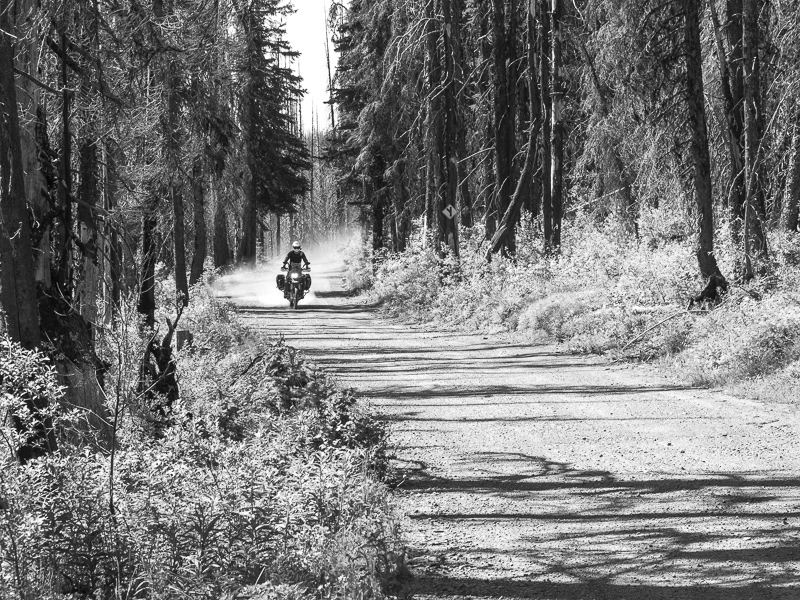
My husband, Dave, riding along the Idaho BDR.
If you’re looking for the fastest way to get from A to B, the BDRs are not for you. Here, you’ll take your time and reunite with the concept of slowing down in life. That is not to say BDRs are easy; quite the opposite! Steep grades covered with loose rock or sand—and maybe a few embedded boulders thrown in just for fun—will test everything you thought you knew about balancing your bike and overcoming fear. Many BDRs also expose you to extreme weather and elevations. The Utah BDR, for example, might have you starting out in a dry, sandy desert, but at some point, usually in the La Sal mountains (I’ve been thwarted here before), you’re likely to run into snow.
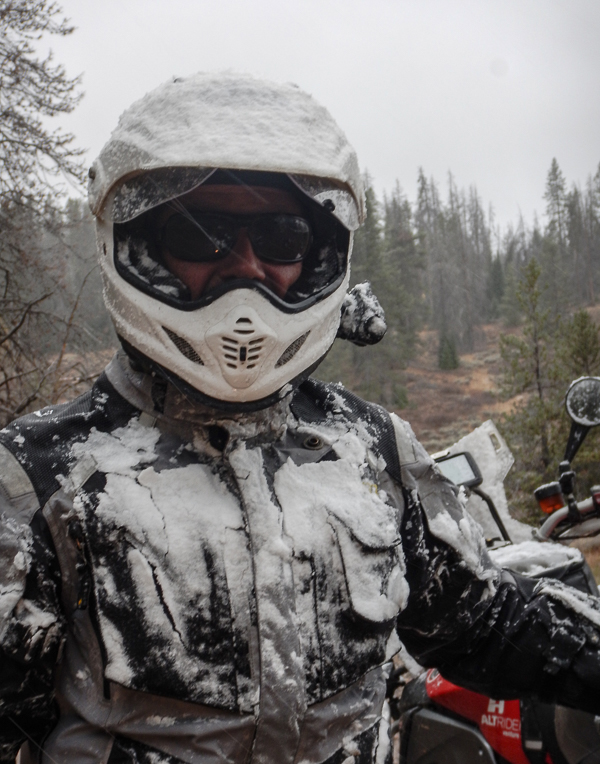
Having done 4 of the 10 BDRs (Washington, Idaho, Utah, and Arizona), I can say these routes offer supreme adventure riding and an educational, inspiring way to road trip through the U.S.

Riding along the Utah BDR.
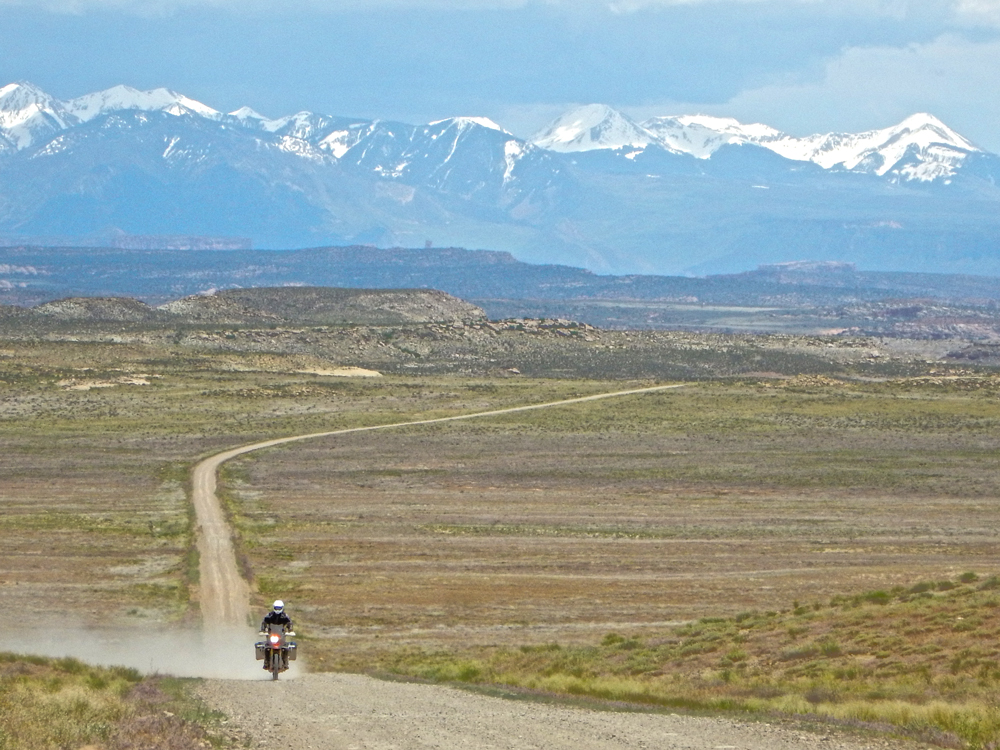
The BDR organization started out small, but as you’ll discover in their anniversary film—streaming for the public on YouTube and Vimeo after June 1—the team has grown along with the number of routes. Until recently, Director of Operations Inna Thorn, along with Touratech CEO and BDR Co-founder Paul Guillien, managed the immense BDR workload in a small loft above Touratech U.S.A.’s headquarters in Seattle, Washington. Inna had to duck under a steel beam to reach her desk, and a ladder was the only way in and out of the loft. As the organization expanded, so did the need for more staff and a bigger office, which the team has now moved into in Seattle.
As with all success, the downside is managing the existing workload while piling on more. In the anniversary documentary, Paul says, “Every new BDR we create, it’s like having another child; it’s another mouth to feed.”
The organization relies heavily on grants, volunteers, ambassadors, and holiday auctions.
Awareness and word of mouth are instrumental factors in success, and the team is working hard on communications outside the U.S. The rideBDR.com/visit-USA webpage is posted in five different languages, including German and Spanish. But bringing in more visitors isn’t just to help the non-profit organization. In 2017, BDR visitors spent 17 million out-of-state dollars in the small, rural towns surrounding the BDRs, and bought 1,170 adventure bikes for the purpose of doing one of the routes.
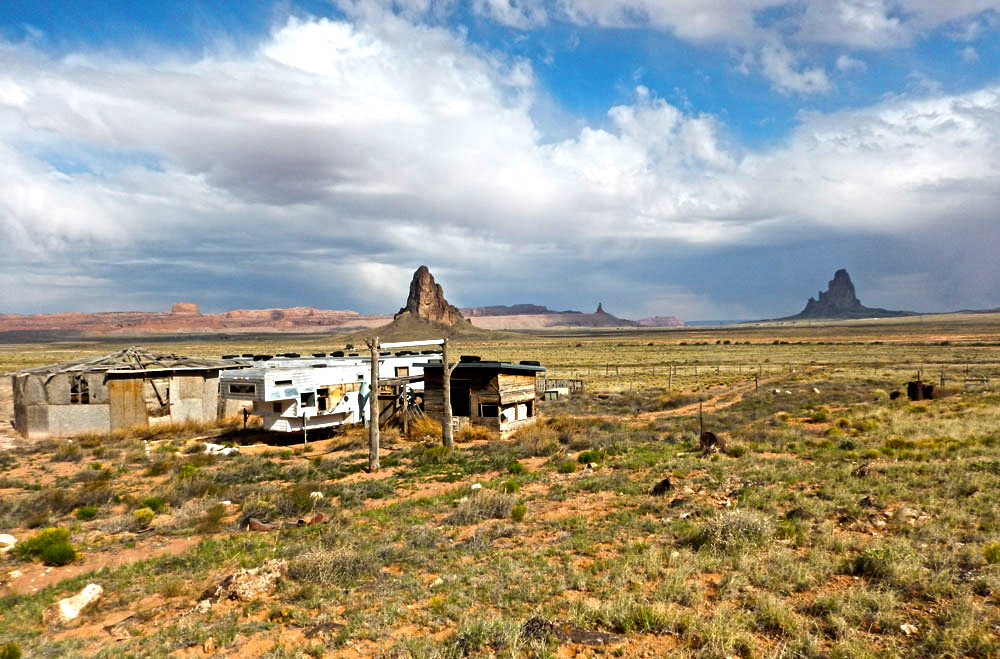
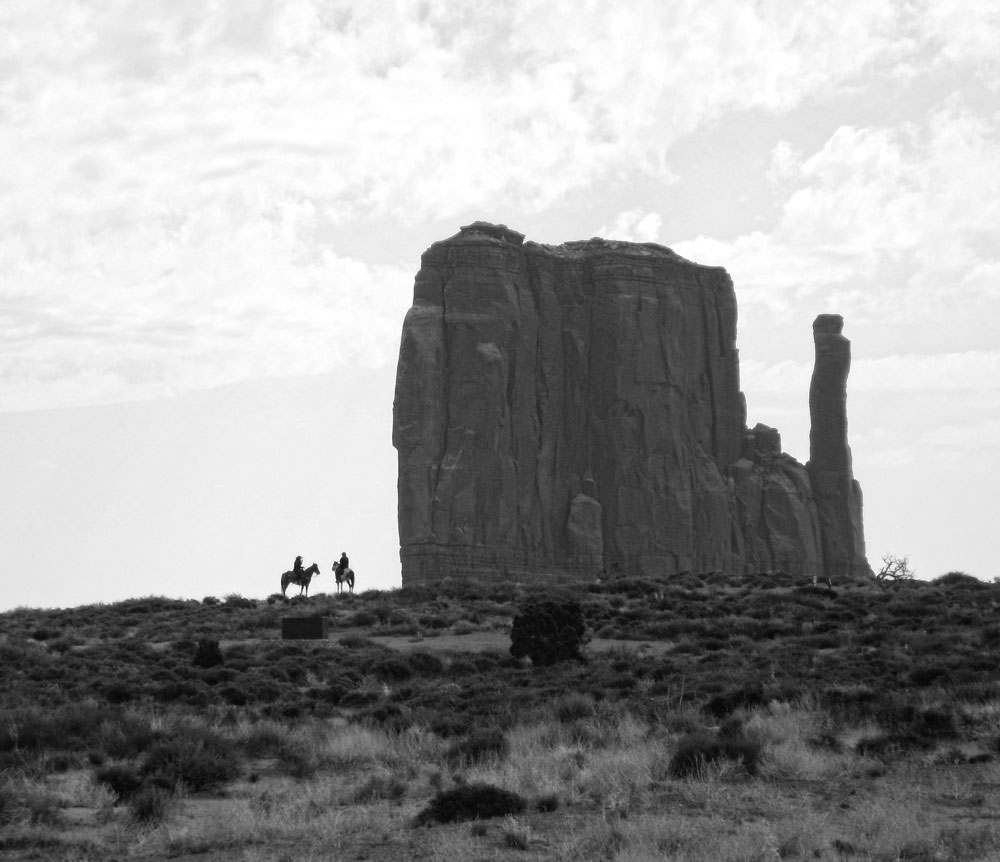

Last week, I watched the anniversary film, Ride BDR A 10-Year Retrospective. With Sterling Noren and other multi-talented filmmakers/photographers/ADV riders behind the lenses, the scenic, exciting documentary was created with insight, humor, fails, and near misses, along with a subtle but firm message throughout about respecting the land and people along the BDRs. The film also goes into extensive detail about how the Oregon Back Country Discovery Route (OBCDR) was the inspiration behind the BDRs but is not considered an actual BDR.
Although there is an obvious demographic on adventure riding trips, the film does a good job of including female riders. That is thanks in no small part to Inna Thorn, who, at a premier one year in Seattle, asked why there were no women in the films, then volunteered to ride in the next one. This Moscow, Russia, native became the first female rider in a BDR documentary during the Arizona chapter.
Other females in the films include BDR ambassadors Tracy Jeffries, Shalmarie Wilson, Jocelin Snow, Jill Oliver, and Victoria Zandonella.
Ride BDR A 10-Year Retrospective goes into engaging details about the history and formation of the BDR non-profit organization and the routes themselves.
If you can’t wait until June 1 and want to plan a BDR trip right now, I don’t blame you. Their website has a ton of valuable information you’ll need, such as free interactive maps, where to stay and eat, fuel stops, and even what to pack. Also note, each and every BDR on the website has its own individual film tour you can view online or purchase as a DVD.
The film goes into much more detail about BDR’s inception. However, here is a brief account of BDR history:
2010—Washington Backcountry Discovery Route (WABDR) 593 miles
Start: Stevenson
End: Canadian border
Bryce Stevens and Andrew Cull create the WABDR and want to make a documentary to share with the off-road community. They ask Touratech U.S.A’s Tom Myers and Paul Guillien if they’ll assist in covering the film’s expenses. The men think they’ll be laughed out the door, but, as Tom says, “This is exactly what we wanted to do.” It’s a pivotal moment for both the future of BDR routes and Touratech’s unwavering involvement.
As the team wraps up the WABDR route, they’re already talking about what’s next. Knowing the concept could exist in every state in the West, Tom gets online and buys domain names for the 11 Western states. The first BDR website is designed, and Butler Maps is brought onboard to supply high-quality, weather-proof maps. BDR becomes a 501 C[4] non-profit organization, offering free GPS tracks to the public.

Along the WABDR.
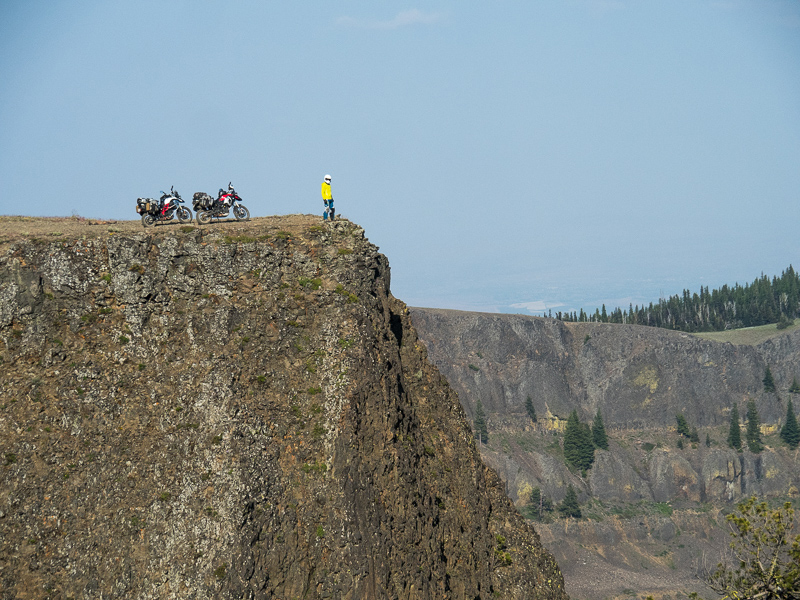
Ridge ride on the WABDR.
2011—Utah Backcountry Discovery Route (UTBDR) 744 miles
Start: Mexican Hat
End: Garden City
Bryce Stevens partners with Rob Watt to scout the Utah route. Flora Lloyd is hired as filmmaker and travels in a Jeep. One of the most advanced off-road sections on any BDR to date is Lockhart Basin along the Utah route.
Dave, riding Lockhart Basin.
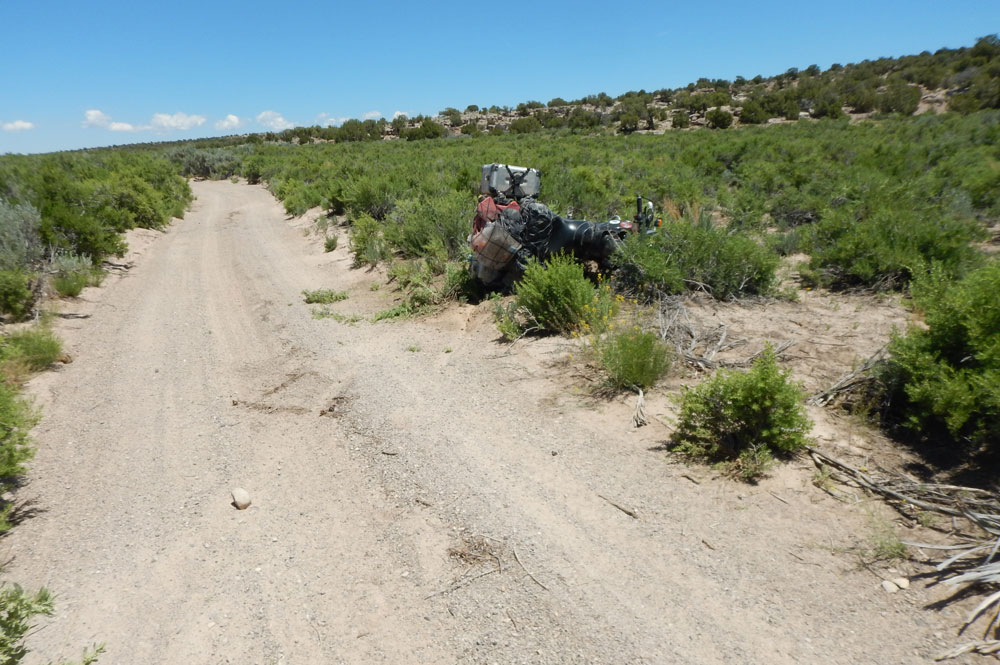
Lots of sand to contend with on the Utah BDR.
2012—Colorado Backcountry Discovery Route (COBDR) 675 miles
Start: Four Corners
End: Wyoming border
The COBDR contains some of the highest moto-accessible roads in the U.S. Hurricane Pass, for example, is 12,730 feet.
Rob Watt is nominated to serve as a board member for the BDR organization and becomes the main scout for all BDR routes.
2013—Arizona Backcountry Discovery Route (AZBDR) 750 miles
Start: Coronado National Monument
End: Utah border
Staying away from the bustle of Tucson and Phoenix, the AZBDR is far more green than visitors expect. The route takes riders and drivers past seldom-seen vantage points for the Grand Canyon.
Inna Thorn becomes director of operations, bringing experience from past work in the non-profit sectors. She also spent six months riding through South America four years prior to starting with BDR.
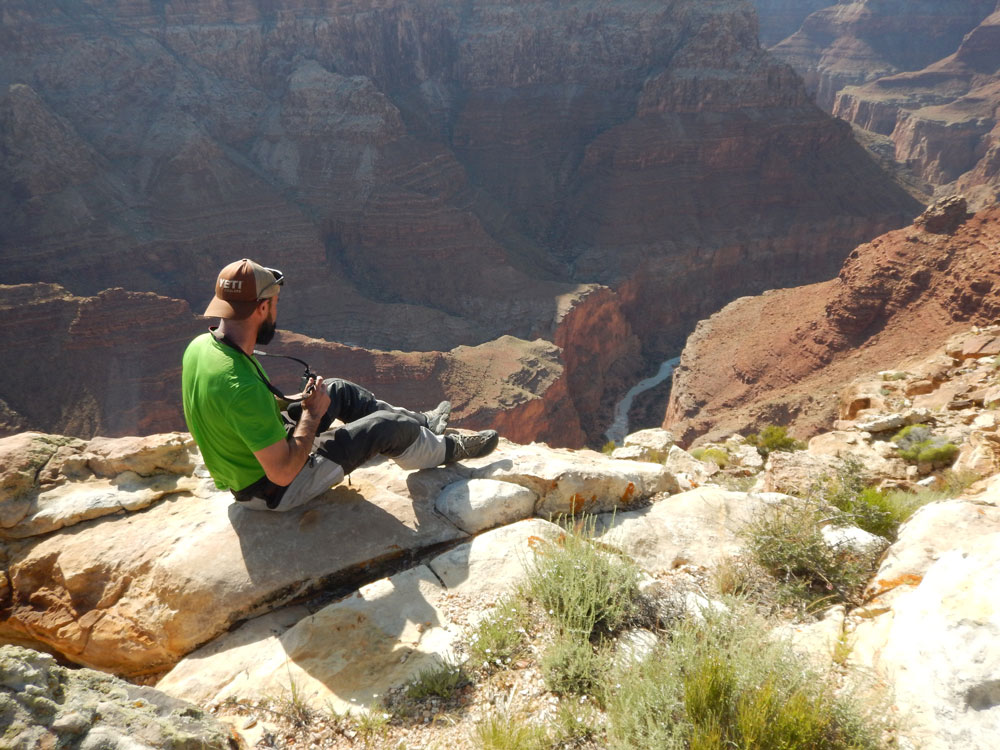
A quiet view of the Grand Canyon.
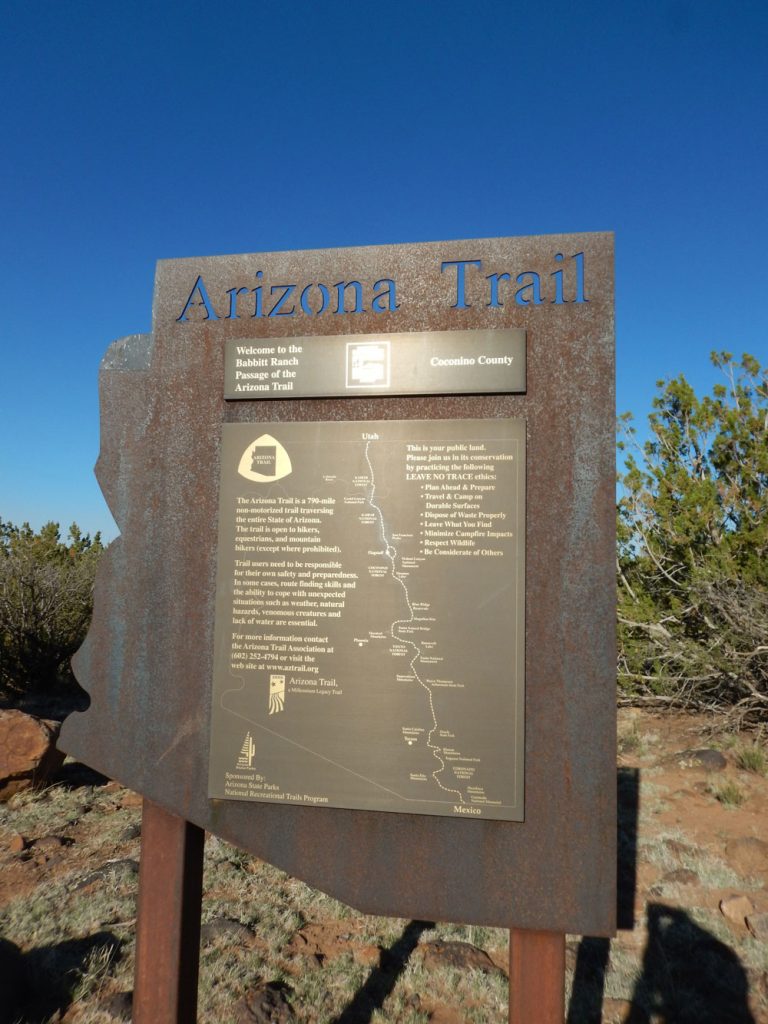
2014—Idaho Backcountry Discovery Route (IDBDR) 1,250 miles
Start: Jarbidge, Nevada
End: Canadian border
It’s the second-longest BDR with endless curving roads but not overly technical. The IDBDR is remote, with few opportunities to tap into that cell phone. (As a side note, Idahoans are some of the nicest people on the planet.)
The Office of Idaho State Tourism gives BDR its first tourism grant through the connections of BDR Treasurer Bill Whitacre. BDR films are now screening in 15 locations nationwide, and Rob Watt hosts the first Touratech Rally in Plain, Washington. To help grow the organization, a BDR ambassador program is started. Ambassadors all over the country help promote BDR by attending rallies, motorcycle shows, and other events.
2015—New Mexico Backcountry Discovery Route (NMBDR) 1,178 miles
Start: Dell City
End: Antonito, Colorado
The Wild West nature of this route might be one of its greatest assets, and the NMBDR brings adventurers closer to the people and towns that make the state so unique. The local gun-and-grocery stores will get you set up to ward off bears, javelina, and rouge turkeys.
2016—Nevada Backcountry Discovery Route (NVBDR) 908 miles
Start: Oatman
End: Jarbidge
The seventh BDR travels through a rich mining culture, complete with ghost towns, saloons, jackrabbits, and antelopes.
The Nevada BDR project is given a grant from Nevada State Tourism, and Honda tests the new CRF 1000 African Twin ADV bike during the documentary with Baja champion Johnny Campbell.
2017—Mid Atlantic Backcountry Discovery Route (MABDR) 1,052 miles
Start: Damascus, Virginia
End: New York border
As the first East Coast BDR, the team putting together the project is concerned the route won’t hold enough excitement. By stringing together a multi-state adventure, riders in the documentary soon find more excitement than they bargained for. The MABDR includes Virginia, West Virginia, Maryland, and Pennsylvania.
BDR ambassador, Jill Oliver, designs cloud-based, real-time maps to display routes on the site. The interactive information shows mileage and conditions on the route, like snowpack and forest fires.
After several unfortunate accidents involving head-on collisions with other riders and vehicles, BDR rolls out the “Ride Right” campaign, telling users to keep right on the road. The organization also puts forth the “Ride Respectfully” campaign, and a webpage gives plenty of good tips like minimizing engine noise, waving to people, and not tearing up terrain.

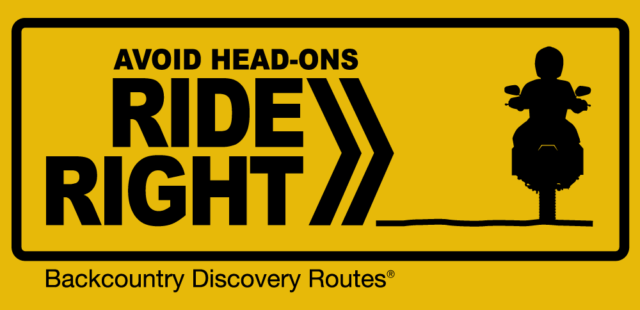
2018—California Backcountry Discovery Route (CABDR) 817 miles
Start: Yuma, Arizona
End: Benton, California
Said to be the most challenging, this BDR takes visitors through deserts and national preserves, canyons, riverbeds, and remote double-track roads.
KTM comes on board with a two-year sponsorship program, and Baja racer, Quinn Cody, joins the filming for the California documentary.
2019—North East Backcountry Discovery Route (NEBDR) 1,317 miles
Start: Hancock, New York
End: Canadian border in New Hampshire
The 10th and longest, this BDR crosses more state lines than any other BDR. As with the MABDR, the challenge is finding enough terrain in these smaller states, and linking up is once again the solution. This diverse BDR spans New Hampshire, Maine, Vermont, and New York.
By 2020, over 60 BDR film premiers are scheduled across the nation. The organization receives a 501 C[3] non-profit status, allowing donations to be tax-deductible and expanding fundraising opportunities. Although this figure couldn’t be verified, the rumor is each BDR project costs around $40,000 in expenses, which includes route development, film and map production, and safety and education programs.
Although 2020 was technically BDRs 10th year, COVID put a halt to any celebrations. Now, in 2021, staff, team members, and anyone else involved in the organization can finally celebrate with Ride BDR A 10-Year Retrospective.
The Future of BDR
Wyoming is the next state in the Backcountry Discovery Routes lineup, with filming finishing up in the fall of 2021 and a project-opening date set for early 2022. BDR will continue to develop routes in each state. Once that mission is completed, there’s talk of reaching out to the rest of the world. Canada, Mexico, and Europe may be next on this growing list of adventurous road trips.
Our No Compromise Clause: We carefully screen all contributors to make sure they are independent and impartial. We never have and never will accept advertorial, and we do not allow advertising to influence our product or destination reviews.

